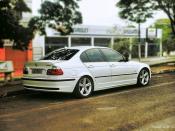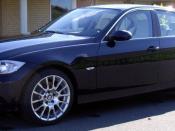IntroductionFrom its inception in 1916 and through the 1970's to the mid 1980's, BMW was one of the fastest growing companies in Germany. Demonstrating profitable growth over their last thirty years, BMW experienced "17% compound annual sales growth from 1970 to 1991". BMW was an independent automobile company selling in over 100 countries establishing itself as a global competitor in the category of luxury/performance vehicles. Although a relatively small global player, BMW cultivated a niche market selling 553,000 units worldwide in 1991, representing 1.7% of the world output of automobiles. Although BMW sustained growth worldwide, their market share in the United States was weakening. In 1986 BMW held 6.8% of the US market share but by 1991 unit sales had decreased from its peak of 96,000 units to an all time low of 53,000. (BMW's history is shown diagrammatically in Appendix 6 of this paper.)Karl Grelinger, president of BMW North America, had a track record for success and was renowned as a 'master marketer'.
His mission in 1992 was to keep BMW out of the 40,000 unit per year niche car market and establish BMW as a 100,000 unit per year auto manufacturing leader. The United States was a key market for BMW and as Heinz van Deelen, director of Marketing Planning for BMW in Munich, put it: "[BMW] must have a market position in Japan, the United States, and Europe. If [we] lose one of these markets, [we] will eventually lose all three." An integrated strategy to reposition and strengthen the BMW brand in the United States was formed, but would it be enough for BMW to gain back valuable market share in the 'most competitive automobile market in the world' and more importantly rejuvenate the brand image?Identification of Action ItemsIn 1974 BMW entered the...



Good but...
Is a good essay with plenty of information about the BMW company, the SWOT analysis was a little confusing since each item was not specified whether it was a strength, weakness, opportunity, or threat for the company.
1 out of 1 people found this comment useful.